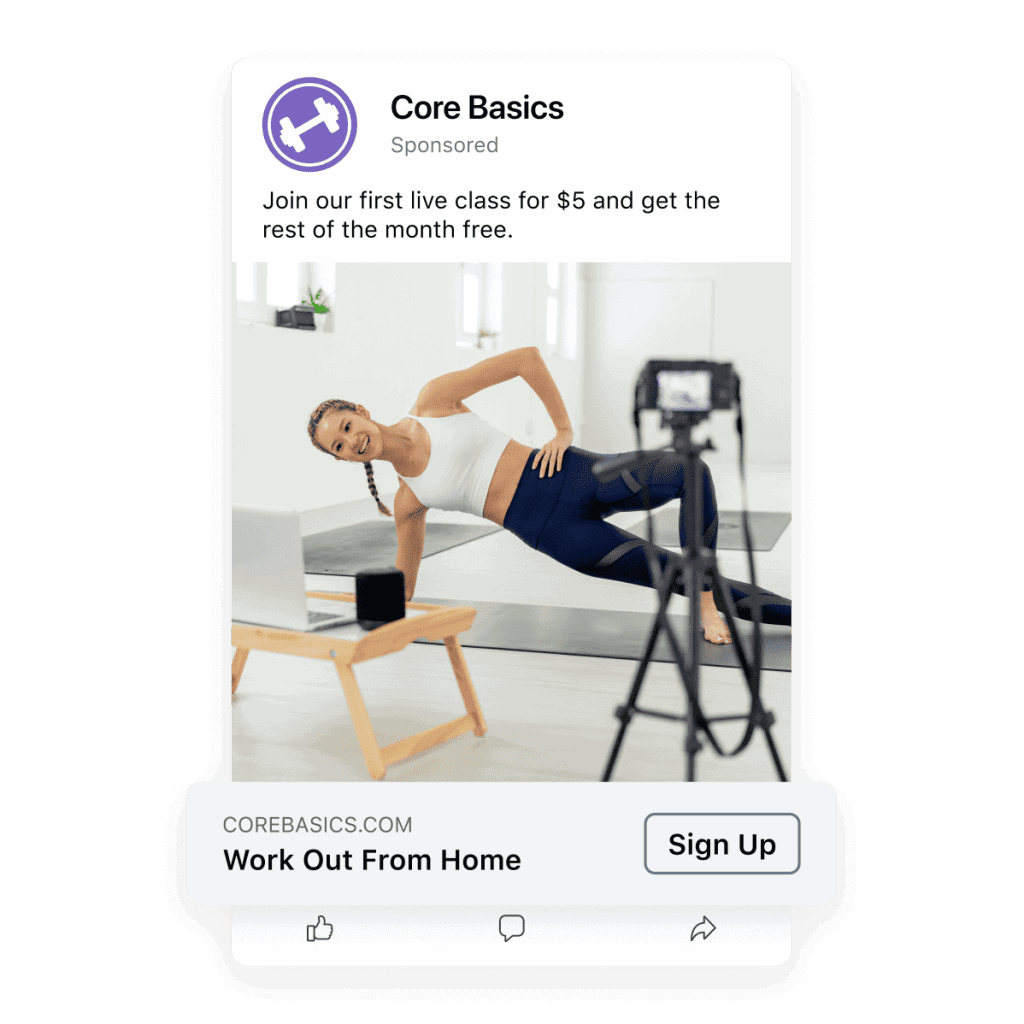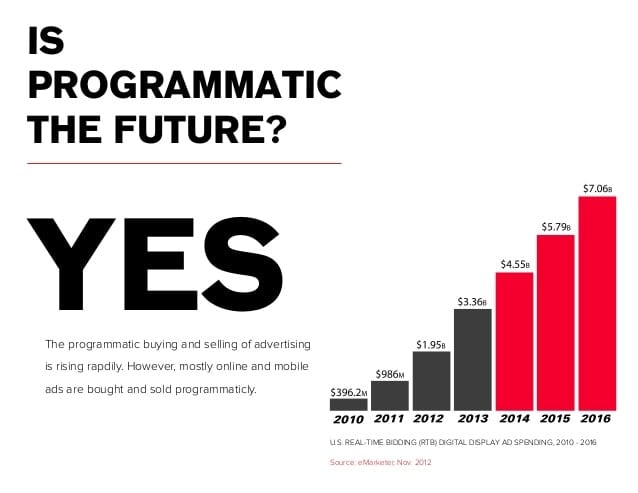Why Mobile Advertising is the Next Big Thing
For most of us, our smartphones are like another appendage. We can't imagine life without these pocket-sized devices that put the world at our fingertips. And with mobile usage continuing to grow, it's no surprise that mobile advertising is exploding.
Mobile ad spending surpassed desktop ad spending for the first time in 2016. And it's only expected to climb – eMarketer predicts that by 2024, mobile ad spending will make up over 50% of total digital ad spending in the U.S.
So why is mobile advertising set to dominate? Here are some key reasons:
Table of Contents
We're Addicted to Our Phones
Let's face it – we love our phones. We use them everywhere we go – at home, at work, in the car, out shopping, waiting in line, and even in the bathroom! The average person spends over 3 hours a day on their mobile device. And we're checking our phones on average 96 times a day!
With users constantly connected and engaged on mobile, it represents a massive opportunity for advertisers. Mobile allows for more personalised, targeted, and integrated campaigns that connect with consumers multiple times throughout the day.
Mobile Usage is Exploding

The numbers speak for themselves – mobile usage continues to grow at an astonishing rate:
- Over 6 billion people worldwide own mobile phones
- 90% of our media time is spent on mobile
- 60% of online shopping searches are done on smartphones
- Messenger and social apps account for over 60% of the time spent on mobile
- More Google searches take place on mobile than on computers in 10 countries
As consumers shift more of their digital activities to mobile, marketers are following suit and allocating more of their ad budgets to mobile platforms. And this shift is happening fast – mobile ad spending grew by an incredible 10% in 2023 (from the year before).
Location, Location, Location
One of the unique advantages of mobile advertising is the ability to target ads based on location. Location data allows advertisers to deliver contextual, personalised ads and offers to consumers on the go.
Some examples of location-based mobile advertising:
- Sending coupons to shoppers when they are near a store
- Displaying ads for restaurants when users are downtown during lunchtime
- Promoting an in-store sale to passersby
- Retargeting previous customers who are in the area
This allows brands to connect with users at the right time and place. Studies show that location-based mobile ads boost engagement by over 50%.
Optimising the In-the-Moment Experience
Mobile devices allow for real-time interactions and experiences with consumers. With mobile ads, brands can connect with users immediately when they are most receptive to engaging.
For example, mobile ads allow brands to:
- Send push notifications about breaking news or new content
- Trigger welcome messages when a user arrives at a location
- Prompt users to take action from an emailed newsletter or offer
- Deliver video ads while a user is playing a mobile game
- Engage users while they are browsing content and moving through the purchase funnel
This allows for greater personalisation and contextualisation of messaging based on real-time consumer habits and locations.
The Rise of App Advertising

As consumers spend more time in apps, in-app advertising is increasing. In-app ad spending is predicted to grow almost 2x as fast as overall mobile ad spending through 2023.
In-app ads allow highly engaging formats like interstitials, video ads, and rich media. Apps also provide a contained environment to measure ad results accurately.
Here are some key benefits of in-app mobile ads:
- Hyper-targeted based on user data like location, demographics, behaviour
- Often, non-skippable video ads that fully engage viewers
- Function offline once they are loaded into the app
- Allow re-engagement with app users to drive purchases or site visits
In-app ad spending will likely overtake browser ad spending in the next few years. This is a shift that brands need to take advantage of now.
The Rise of Mobile Video Advertising
Video ads are multiplying on mobile. About 75% of smartphone users watch videos for over 5 hours daily!
And 79% of video views are taking place on mobile. With video dominating engagement on platforms like Facebook and YouTube, it continues expanding through mobile video ads.
Some unique benefits of mobile video ads:
- They are sight, sound and motion – capturing greater consumer attention
- Shorter ads fit better into scrolling on the mobile feed
- Calls to action can drive direct mobile conversions
- Interactive elements like 360 video provide greater immersion
Brands see much higher engagement rates with mobile video ads than other formats. Expect brands to shift more of their video spend to mobile platforms and apps in the coming years.
Retargeting on the Go

Retargeting has become a significant component of digital advertising strategies. Mobile retargeting allows brands to continue engaging consumers on the go through relevant advertising across their days.
With mobile ads, brands can build integrated experiences by retargeting users across devices and channels. For example:
- A user views a product on your website at home
- Your brand then shows an ad for that product in a mobile game they play during their commute
- When they are browsing content on their phone in the evening, your brand displays a retargeting video ad for them
This creates a continuous, consistent experience that repeatedly exposes them to your brand and the product they showed interest in. Mobile retargeting ads have much higher CTR and conversion rates.
Bite-sized, Snackable Ads
We generally use our phones on the go and while multitasking. This means mobile ads need to convey messages quickly in a bite-sized format.
Short, simple, visually engaging mobile ads work well by communicating a single message. Some practical formats include:
- Simple animated gifs or cinemagraphs
- Short video ads between 6 – 15 seconds
- Single-image ads with minimal text overlay
- Clean display ads tailored to mobile
Streamlined mobile ads that load quickly and are easy to view in-feed are less interruptive and more effective. Brands must re-think their messaging to cut through on mobile in 3 seconds or less!
Optimising for Mobile Commerce
As consumers get more comfortable making purchases from their phones, mobile commerce is multiplying. Mobile drives an increasing share of ecommerce transactions and sales.
Mobile ads that drive conversions are critical for brands to connect mobile audiences with transactions. Tactics like click-to-call ads or ads with direct links to transaction pages are effective ways to convert mobile users.
Seamless experiences like auto-filling payment information also help to reduce friction in mobile purchases. With mobile ecommerce growth accelerating, optimising ads to drive mobile transactions will become a bigger priority.
Leveraging Mobile Users as Brand Ambassadors

The most potent form of mobile advertising comes directly from customers themselves! Brands can leverage mobile users to spread the word as brand ambassadors organically.
For example, brands can encourage:
- User-generated content like posts, photos and videos of your product
- Sharing your content or promotions on social media
- Referrals through messaging or texts
- Reviews and ratings that lend credibility
- Check-ins that are shared when a user engages with your brand
The rise of ephemeral content on mobile stories has further amplified organic peer-to-peer marketing. This authentic, earned user content is hugely influential with mobile audiences.
Micro-Moments Mean Micro-Targeting
Mobile devices allow for almost constant consumer connectivity. This means brand moments and touchpoints are increasingly taking place in quick spurts throughout the day.
Google calls these “micro-moments” – the micro-moments throughout our day when we turn to our phones to take action, get information, buy something, or engage with a brand.
The mobile ads that will win in this environment are those that understand and connect with user intent in these quick moments. Brands must target consumers based on these real-time needs and contexts to help mobile users.
Understanding the mobile user journey will be critical in deploying hyper-targeted, intent-based mobile advertising campaigns.
The Rise of Mobile Programmatic Advertising

Programmatic ad buying is taking over the digital landscape. It uses automated systems and algorithms to buy and optimise real-time ads. Now, programmatic is expanding rapidly into mobile.
What are the benefits of mobile programmatic advertising?
- Real-time optimisation to target key audiences at the right time
- Drive higher ROI by only paying for conversions and desired actions
- Flexibility to adjust campaigns and increase budgets to better-performing placements
- More advanced targeting based on mobile data like carrier and operating system
- Streamlined workflows and consolidated performance reporting
Brands that leverage programmatic techniques for their mobile ad buying will gain a performance edge. Look for programmatic to account for over 80% of mobile display ad budgets within the next several years.
The Need for Mobile Measurement
With users shifting their time and attention to mobile, brands must accurately measure mobile ad results to optimise effectively. This means implementing robust mobile attribution to understand:
- How mobile ads drive conversions across devices
- The influence mobile ads have on in-store sales
- What types of mobile ads perform best for your goals
With cross-device consumer journeys, mobile attribution must look beyond last-click models to measure influence across marketing channels. Mobile ad analytics are crucial to unlocking optimisation.
Brands must also measure real mobile KPIs like engagement rate, app installs and time spent rather than just clicks and impressions. Mobile offers unique insights – ensure you have the proper tools to access them!
Key Takeaways and Predictions for Mobile Advertising
Mobile advertising is genuinely taking off. As consumer behaviour shifts toward mobile, advertising budgets and tactics must follow suit. Here are some critical predictions for where mobile advertising is headed:
- Total mobile ad spending will be near $235 billion by 2025 – It will account for over 72% of digital ad spending and 29% of total media ad spending globally.
- Video will be the fastest growing mobile ad format – 78% growth predicted through 2023
- Location-based targeting will enlarge – Addressable geotargeting of ads will become more precise using GPS, beacons, and WiFi.
- Quick-loading branded content will dominate – 6-second video ads, single-image ads, and short-form content.
- Conversational ads will emerge – Personalised dialogue through chatbots, messaging apps and voice.
- More seamless in-app experiences – Payments, gamification, augmented reality, virtual goods
- Programmatic buying will be used for over 80% of mobile display ads – Driven by the performance advantages of programmatic optimisation.
- Privacy changes will force innovation – Adapting to privacy updates like iOS 17 will require better contextual strategies.
The mobile advertising landscape five years from now will look very different than today. Brands must start putting the pieces in place now to stay ahead of the curve and effectively engage the mobile consumers of the future.
Frequently Asked Questions About Mobile Advertising
Mobile advertising generates a lot of interest and questions from both brands and consumers. Here are answers to some of the top FAQs:
What are the main formats of mobile ads?
Some of the most common mobile ad formats are display ads, video ads, native ads, social media ads, push notifications, and SMS ads. Display ads include banners, interstitials, and rich media.
What are the benefits of mobile ads for consumers?
For consumers, mobile ads can provide helpful information, offers, coupons and recommendations that are timely and relevant based on their interests and locations. They can also provide entertainment or product education through engaging video ads.
How can I make my mobile ads stand out?
Great visuals, short branding, single CTA buttons, succinct text, and video are critical creative elements for mobile ads. Use movement and interactivity, but keep file sizes small for quick loading. Match the ad format to where it will be placed.
How do you measure the results of mobile ads?
Critical metrics for mobile ads include clicks, swipes, completed views, click-through rate, installs, purchases or leads. Measure both immediate conversions and longer-term brand lift. Use multi-touch attribution to see influence across channels.
How frequently should I run mobile ads?
Most brands continuously run mobile ads to stay top of mind, using advanced targeting to deliver relevant messages and offers. Set schedules for different campaigns – some always-on, some pulsing, some seasonal. Test frequencies to see what works best.
What targeting options exist for mobile ads?
You can target mobile ads using location, device type, operating system, app category, time of day, keyword search, browsing history, interests, demographic info, past purchases, and more. Lookalike modelling also helps expand your reach.
Do mobile ads work better than other formats?
Research shows that mobile ads often perform better than digital ad formats because of proximity targeting, user context, and smartphone buying readiness. Expand mobile ad spending but use cross-device metrics.
How can I tell if my mobile ads are working?
Key performance indicators are click-through rates, cost per click/acquisition, conversion rates, return on ad spend, and attribution across devices. A/B test different versions of your ads. Surveys can also provide consumer sentiment and brand lift data.
Should I hire an agency to run my mobile ad campaigns?
Many brands use digital marketing agencies to help develop mobile ad creative, trafficking, optimisation, analytics, and campaign management. But app developers, ad networks and programmatic platforms also offer self-serve mobile ad capabilities.
What does the future hold for mobile advertising?
Experts predict critical trends like the rise of video ads, targeted social media ads, personalised messaging via AI, location-based contextual ads, augmented reality formats, and integrated cross-device/cross-channel campaigns leveraging programmatic buying.
